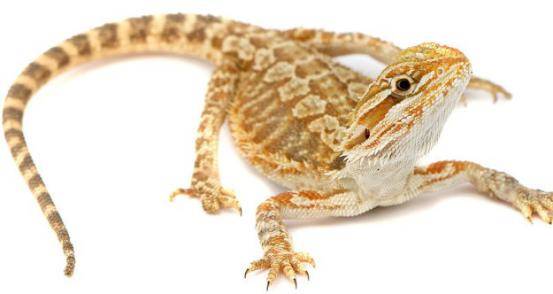Juvenile bearded dragons are ones whose age lie between baby and subadults. Their typical age is 2-7 months, and their size is 12-19 inches with the younger ones shorter and the older ones longer.
Tank setup and supplies
Any ideal tank size should be 40-55 gallons. However, going for a 75 gallon and above tank will save you the cost of having to replace it as well as buy new supplies, especially lighting and heating, since the enclosure will be more prominent in size.

Avoid kits, including the Zoo Med and Reptihabitat Kits, and invest in a good quality tank and supplies. Most of them are small, and many people have noted that the monitoring devices don’t last long.
The supplies they need are the same as the various supplies that bearded dragons require. These include:
- Correct tank size and screen cover.
- Substrate
- UV Light bulbs, heating lamps, or devices, as well as their fixtures.
- Control and monitoring equipment like thermometers, reptile timers, hygrometers, and thermostats
- Décor and furniture like hammocks, climbing branches or logs, basking platforms, live and artificial plants, terrarium backgrounds, among others.
- Feeding and watering bowls
- Toys
Once you have obtained all these supplies, you can do your tank setup, which isn’t an arduous task.
Finally, avoid keeping together different species such as P. vitticeps and P. henrylawsoni together as they may result in aggression.
Food and Diet
Which foods should juvenile bearded dragons eat, how often should you feed them, and what ratio of feeder insects to veggies should the eat? See more on juvenile bearded dragon diet and feeding.
Behavior
Juveniles may begin to be territorial, bob their head, wave their arm, display their beard, among other typical beardie behaviors. Unless it is a behavioral problem, don’t bother them.
Care
Proper care is vital for optimum health. Besides feeding and providing them with the right shelter, ensure you keep their habitat very clean. Spot clean their cages once dirty and clean them thoroughly once in a month.
Also, bathe them to help them shed (when shedding) as well as keep them well hydrated as they will tend to drink water as you soak them.
In case they are shedding, besides hydration, misting will also aid sloughing as well as shedding aids like Zilla Shed-Ease Reptile Bath, Zoo Med Repti Shedding Aid or Zilla Tropical Mist Reptile Spray
Other requirements are more or less the same as care requirements for adult beardie brumation, as most won’t brumate.
Health and vet care
A healthy juvenile beardie should be alert, active, energetic, and have bright alert eyes. Furthermore, they should have a usual posture, walk normally, eat, bask, have no swelling or discharges.
While they are hardy, they do get sick, especially in the case of poor husbandry, care as well as nutritional deficiencies and wrong heat or UV lighting settings. Common health problems they may suffer from include:
- Metabolic bone disease
- Mouth rot
- Tail rot
- Parasites
- Respiratory infections
- Atadenovirus infection
- Yellow fungus
- Impaction and constipation
- Dehydration
- Ear, eye and nose infections
In case of any abnormal behaviors or signs of illness including lethargy, diarrhea, vomiting, sunken eyes, jerky movements including limping, discharges, cloudy eyes, not eating, and so forth, see your vet for diagnosis and treatment.
Finally, periodical vet visits such as annual or biannual ones will help detect any illness early and confirm their general health status.
